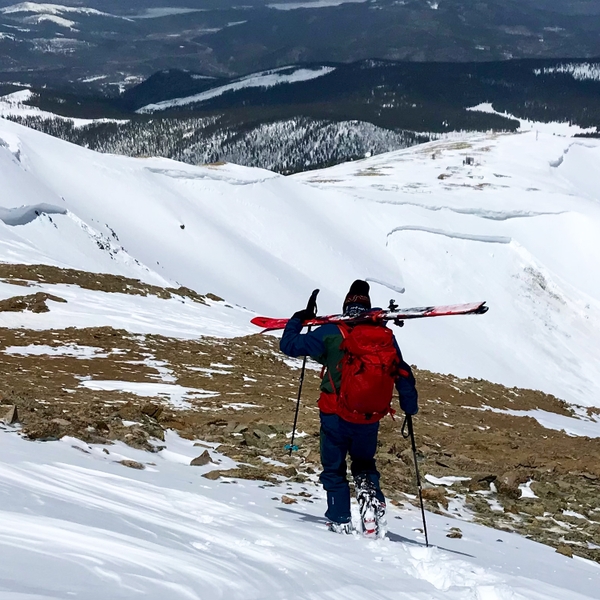I Reported on Avalanches for 15 Years. Then I Triggered a Huge One.
After kicking off an enormous slide on a familiar backcountry run in Colorado, our writer was forced to reconsider his relationship with skiing
Heading out the door? Read this article on the Outside app available now on iOS devices for members! Download the app.
When I saw the numbers on my screen, I winced. The wind had picked up. It was 6 o’clock in the morning on Tuesday, April 26, perhaps the last powder day of the season where I live in Breckenridge, Colorado. I was about to leave my home to meet a friend, professional photographer Liam Doran, for a morning of backcountry skiing on a 13,684-foot peak above town called Bald Mountain. No camera, just fun.
Baldy, as it’s known, is the most popular place to ski low-angle slopes during the winter; you can often find a dozen or more locals sharing the mellow bowl on its northwest flank. But come spring, Baldy’s steeper, leeward backside beckons and the crowds disappear. Both Liam and I had skied its chutes for almost two decades without incident. Every year, we wait until the deeper weak layers that plague Colorado’s snowpack have strengthened, so that we can enjoy the fluff on top without worrying about what lurks below it. But the timing is variable and imprecise. Some years it takes longer for the threat of a persistent-slab avalanche—a large, cohesive mass of snow resting on top of a layer that resists bonding—to go away. This had been one of those years. But, like a landmine, you rarely see signs before it’s too late.
A healthy storm cycle had just delivered 15 inches of fresh snow, spread out over three days. The storm arrived with high winds then turned calm, a rarity in our area. The powder bonded especially well to the base. Lower-elevation slopes had entered a more predictable melt-freeze cycle, and avalanche activity seemed to have ebbed. After waiting all winter to ski steeper backcountry terrain, it felt like the time had come.
“Wanna ski a couple runs on the backside of Baldy tomorrow morning?” I texted Liam.
“Yeah I’m down for that,” he replied. “Time?”
Our wives agreed to get our kids to school, which freed us to meet at the trailhead at 6:45 A.M.—early enough to beat the sun and warming temps.
I wanted the skiing to be as perfect as it had been in the past: fresh powder flying over our heads under a bluebird sky. So when I pulled up data from a nearby weather station at 12,500 feet, I tried to rationalize numbers that I knew deep down contradicted my desire. Average wind speeds had increased overnight to 33 miles per hour with gusts nearing 40—plenty strong enough to drift new snow into a leeward slab.



